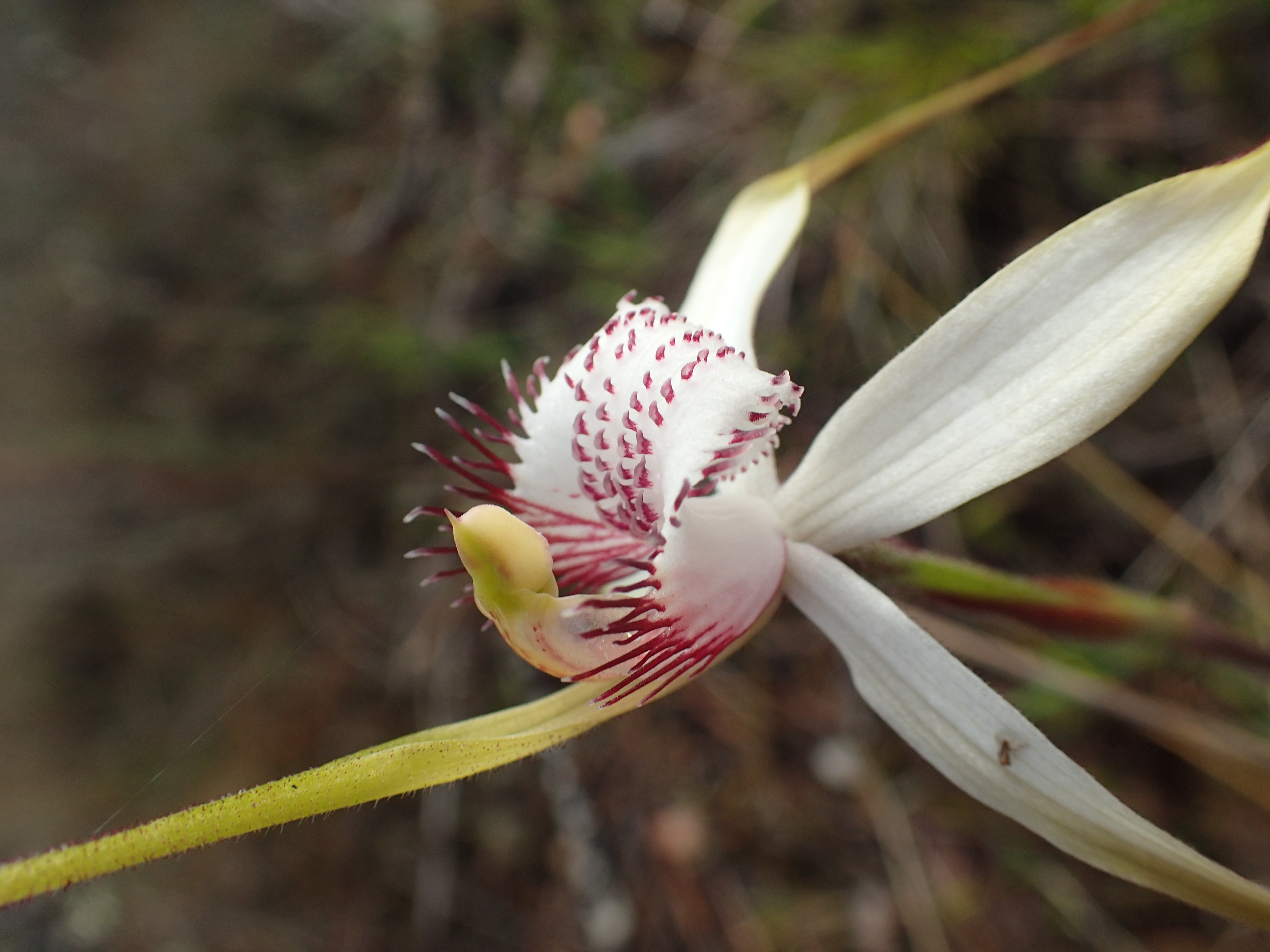Caladenia Splendens on:
[Wikipedia]
[Google]
[Amazon]
''Caladenia splendens'', commonly known as the splendid spider orchid, or splendid white spider orchid is a species of orchid endemic to the 
south-west
The points of the compass are a set of horizontal, radially arrayed compass directions (or azimuths) used in navigation and cartography. A compass rose is primarily composed of four cardinal directions—north, east, south, and west—each se ...
of Western Australia. It has a single erect, hairy leaf and up to three mostly white flowers with a fringe of long teeth on the sides of the labellum. Along with the giant spider orchid, ''Caladenia excelsa
''Caladenia excelsa'', commonly known as the giant spider orchid, is a species of orchid Endemism, endemic to a small area in the Southwest Australia, south-west of Western Australia. It is a rare species with a single, hairy leaf and up to t ...
'' it is the largest of the spider orchids.
Description
''Caladenia splendens'' is a terrestrial, perennial, deciduous,herb
In general use, herbs are a widely distributed and widespread group of plants, excluding vegetables and other plants consumed for macronutrients, with savory or aromatic properties that are used for flavoring and garnishing food, for medicinal ...
with an underground tuber and a single erect, hairy leaf, long and wide. Up to three mostly white flowers long and wide are borne on a stalk tall. The sepals and petal
Petals are modified Leaf, leaves that surround the reproductive parts of flowers. They are often advertising coloration, brightly colored or unusually shaped to attract pollinators. All of the petals of a flower are collectively known as the ''c ...
s have long, brownish thread-like tips and often have red lines on their backs. The dorsal sepal is erect, long and wide. The lateral sepals are long and wide, spread apart and curve downwards. The petals are long and wide and arranged like the lateral sepals. The labellum is long, wide and white to cream-coloured with narrow red teeth up to long on the sides. The tip of the labellum is curled under and there are four rows of white and red calli up to long, along the mid-line of the labellum. Flowering occurs from September to October.
Taxonomy and naming
''Caladenia splendens'' was first formally described in 2001 byStephen Hopper
Stephen Donald Hopper AC FLS FTSE (born 18 June 1951) is a Western Australian botanist. He graduated in Biology, specialising in conservation biology and vascular plants. Hopper has written eight books, and has over 200 publications to his n ...
and Andrew Phillip Brown
Andrew Phillip Brown (born 1951) is a conservation biologist and taxonomist at the Western Australian Department of Environment and Conservation. He is also curator of Orchidaceae and Myoporaceae
Myoporaceae was a family of plants, found mostly ...
from a specimen collected near Gingin and the description was published in '' Nuytsia''. The specific epithet
In taxonomy, binomial nomenclature ("two-term naming system"), also called nomenclature ("two-name naming system") or binary nomenclature, is a formal system of naming species of living things by giving each a name composed of two parts, bot ...
(''splendens'') is a Latin word meaning "splendid" or "resplendent" referring to the "brilliant white" colour of this orchid.
Distribution and habitat
The splendid spider orchid is found between Gingin and Frankland in the Avon Wheatbelt, Geraldton Sandplains, Jarrah Forest andSwan Coastal Plain
The Swan Coastal Plain in Western Australia is the geographic feature which contains the Swan River as it travels west to the Indian Ocean. The coastal plain continues well beyond the boundaries of the Swan River and its tributaries, as a geol ...
biogeographic regions
A biogeographic realm or ecozone is the broadest biogeographic division of Earth's land surface, based on distributional patterns of terrestrial organisms. They are subdivided into bioregions, which are further subdivided into ecoregions.
De ...
where it grows in woodland and forest in moist gullies and other places where water is available in winter.
Conservation
''Caladenia splendens'' is classified as "not threatened" by the Government of Western AustraliaDepartment of Parks and Wildlife
The Department of Parks and Wildlife (DPaW) was the department of the Government of Western Australia responsible for managing lands described in the ''Conservation and Land Management Act 1984'' and implementing the state's conservation and e ...
.
References
{{Taxonbar, from=Q9673968 splendens Endemic orchids of Australia Orchids of Western Australia Plants described in 2001 Endemic flora of Western Australia Taxa named by Stephen Hopper Taxa named by Andrew Phillip Brown